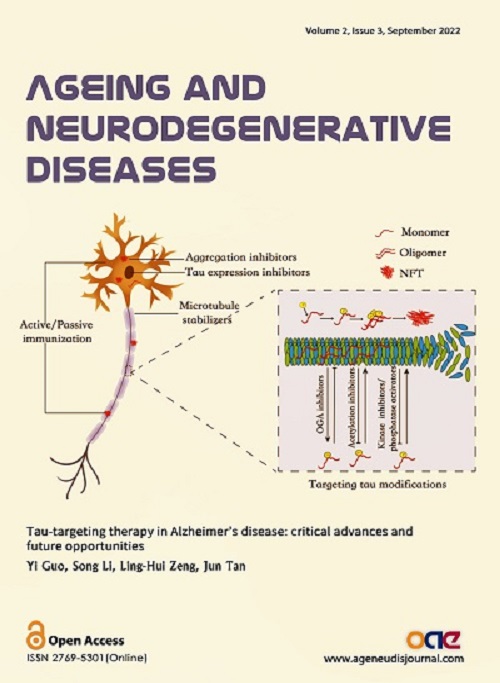Volume 2, Issue 3 (September, 2022) – 5 articles
Cover Picture: Alzheimer’s disease (AD) is a progressive neurodegenerative disorder characterized by two pathological hallmark lesions: extracellular plaques composed of β-amyloid (Aβ) peptide and intracellular neurofibrillary tangles made up of highly phosphorylated tau protein. Over the past two decades, most disease-modifying therapies against AD have been developed mainly on the basis of the amyloid cascade hypothesis with a focus on Aβ. However, these agents yielded only limited benefits against disease progression, which prompts us to revitalize the long-neglected tau hypothesis. Tau protein is a microtubule-associated protein, which can stabilize microtubules, regulate microtubule assembly, and affect the morphology and growth of neuronal axons. Much more importantly, the degree of tau pathology is more closely related to cognitive decline in AD patients than that of Aβ pathology. Therefore, tau-targeting therapy seems to be a promising approach to combat AD. This review describes the research progress of tau-targeting therapy in AD, with an emphasis on immunotherapy. The current challenges and future perspectives in this field are also discussed.
view this paper
Download This Issue Viewed:







